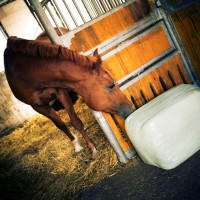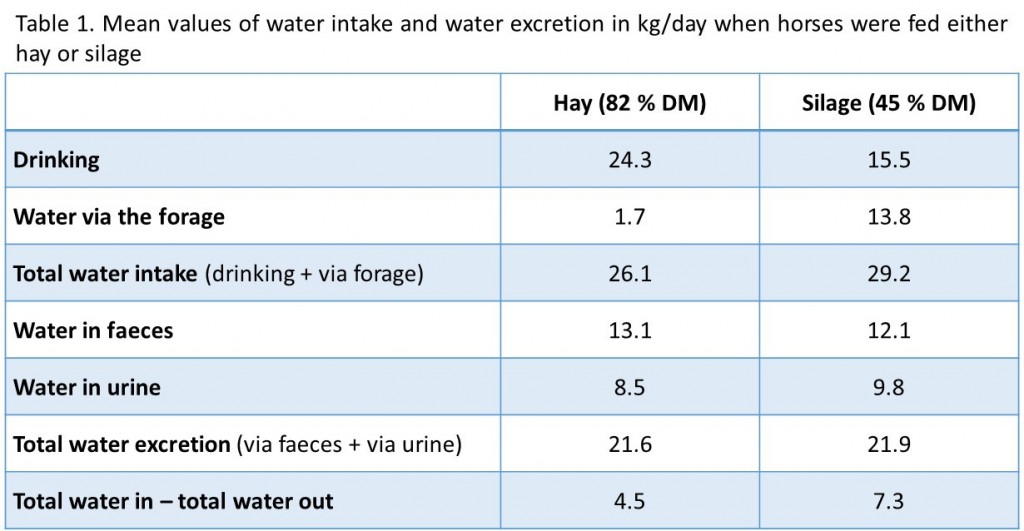Differences in fluid balance when horses eat hay or silage

In this study the effects on water intake and fluid balance in trotters in training was examined when feeding a diet of hay (82 % DM) and a diet of silage (45 % DM). The forages were harvested on the same day from the same ley, it was an early harvest with high energy content (11.6 MJ/kg DM). The horses ate only the forages, which covered the maintenance requirements × 2, supplemented with minerals and salt. The horses had access to water from buckets.
Table 1 shows how much the horses drank on the different diets, how much water they got via the feed and how much water they excreted via faeces and urine. The horses drank more when they were fed the drier feed (the hay diet) but the total water intake, e.g. what the horses drank + the water via the feed, was higher on the wetter feed (the silage diet). There was no significant difference in how much water was excreted via faeces, a little more water was excreted via urine but the total water excretion (water via faeces + via urine) did not differ between the diets. If we take the total water intake minus the total water excretion via faeces and urine we get an estimation of how much water the horses have evaporated, e.g. lost via the skin and respiratory ways. On the silage diet the horses evaporated about 2.8 kg more water per day than on the hay diet.
The higher evaporation of water indicates that the horses had a higher heat production on the silage diet which is in accordance with the higher digestibility that has been measured for the silage diet. The silage had slightly higher digestibility even though it was from the same ley harvested on the same day and there is more to read about this here. Fibrous feeds with high digestibility implies higher heat production during digestion, higher so called “heat increment of feeding”. When the horses ate the silage diet with the higher digestibility the heat production increased which caused the higher evaporation of water via the skin and the horses to increase their water intake. Even for maintenance fed horses it has been shown that they drink more on drier forages (hay, haylage) but the total water intake is a little bit higher on wetter forages (silage).
The water supply method is always very important but maybe even more when horses eat dry feeds and therefore have to drink considerably more, and there is more to read about this here.
Sara Muhonen, AgrD

